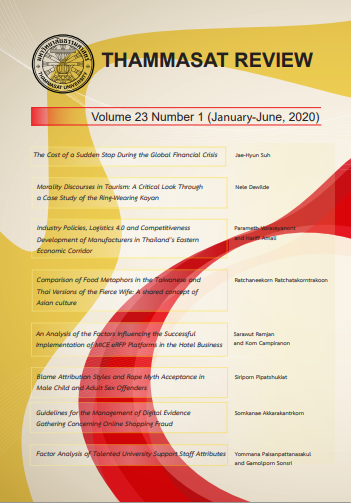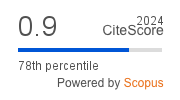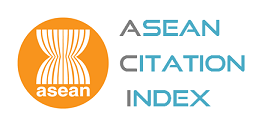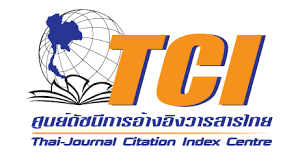Blame Attribution Styles and Rape Myth Acceptance in Male Child and Adult Sex Offenders
Keywords:
External Blame Attribution, Mental Attribution, Rape Myth Acceptance, Child Sex offenders, Adult Sex OffendersAbstract
This study investigates the cognition of sex offenders in their interpretation and making sense of convicted crimes and how they perceived themselves as contributors to the crime in their self-to-self-reflection perspective. The study was also designed to access their interpretation of other people’s attitude regarding rape. Three hundred and eighty-four incarcerated Thai sex offenders from eight Central Prisons across Thailand were examined for their cognitive processing in their committed crimes against child and adult victims using two self-report instruments: (1) Gudjonsson Blame Attribution Inventory-Revised (GBAI-R: Gudjonssan & Singh, 1989); and (2) Illinois Rape Myth Acceptance-Short Form (IRMA-SF: Payne, Lonsway & Fitzgerald, 1999) which is used to examine their attitude toward the appropriateness regarding sexual intercourse also shaped by the general perception from society that they are embedded in. The impact of these contributing factors in nurturing the rape-supportive attitudes and beliefs are hypothesized to be reflected in their styles of blame attribution. Adult sex offenders reported a higher external attribution score than child sex offenders. There are no differences in the mental attribution and guilt scores between child sex offender and adult sex offender groups. Rape myth acceptance total mean score is positively correlated with the external attribution score in both child sex offender and adult sex offenders while the rape myth subscales reveal a different correlation to the blame attribution subscales. Rape myth acceptance statements and external blame attribution functioned to reduce guilt in adult sex offenders while it did not reduce guilt in child sex offenders but rather provided the content in their statements in justifying their criminal action to external and mental factors. There was no difference between child sex offenders and adult sex offender groups in the rape myth total mean score and seven rape myth subscales, which could be reflecting the more common thinking pattern among the child sex offenders and adult sex offenders.
Downloads
Published
How to Cite
Issue
Section
License
The opinions and ideas expressed in all submissions published in Thammasat Review are solely that of the author(s) and do not necessarily reflect that of the editors or the editorial board.
The copyright of all articles including all written content and illustrations belong to Thammasat Review. Any individuals or organisation wishing to publish, reproduce and distribute a particular manuscript must seek permission from the journal first.








